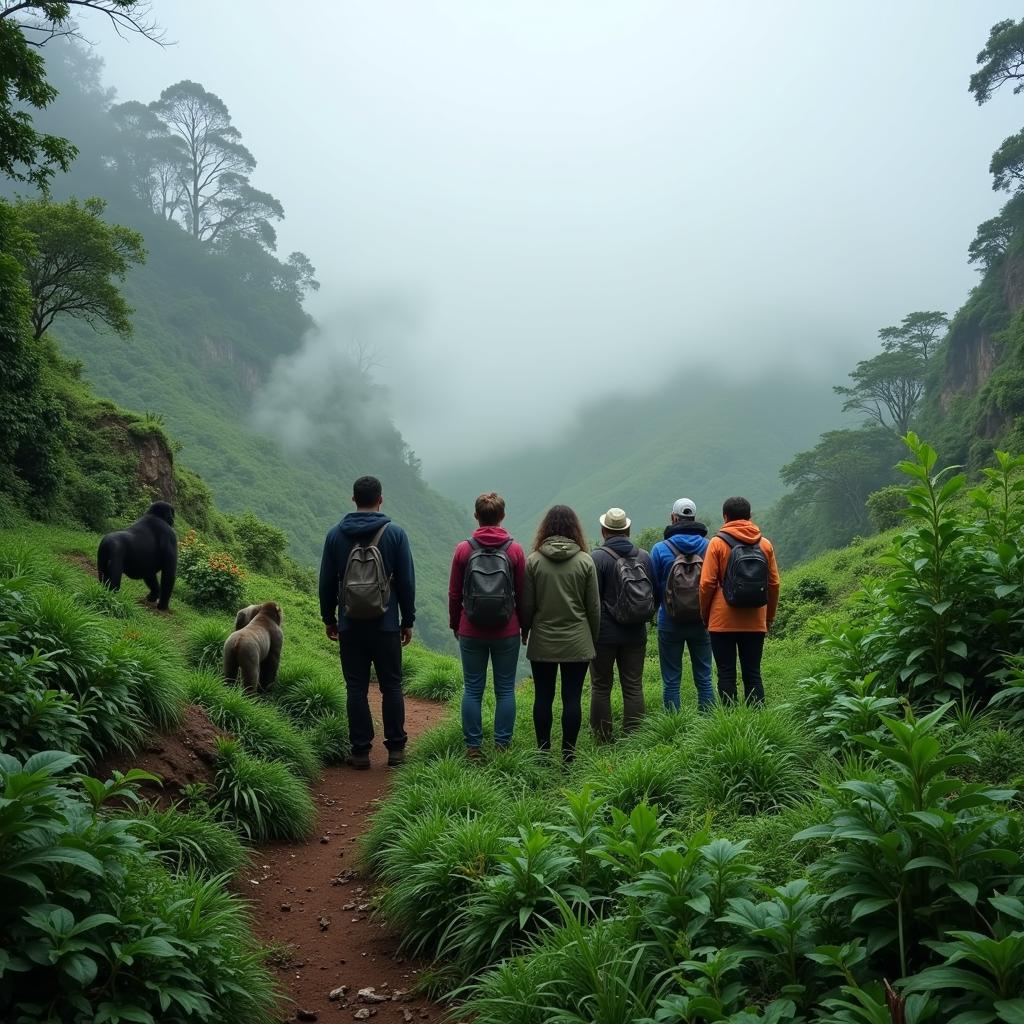Unraveling the Mysteries of African Cave Drawings
African Cave Drawings offer a fascinating glimpse into the minds of our prehistoric ancestors. These ancient artworks, etched onto rock surfaces across the continent, provide invaluable insights into the lives, beliefs, and artistic expressions of early humans. From depictions of animals and hunting scenes to abstract symbols and geometric patterns, African cave drawings represent a rich tapestry of human history and cultural evolution.
The study of African cave drawings allows us to connect with the past and understand the development of human consciousness. These paintings, some dating back tens of thousands of years, depict not only the natural world that surrounded these early communities but also their spiritual and symbolic interpretations of it. These images provide a window into a world long gone, allowing us to piece together fragments of their stories and appreciate the dawn of human creativity. This journey takes us through diverse regions, showcasing the unique styles and subject matter that characterize each area.
Exploring the Significance of African Cave Drawings
African rock art represents a unique form of visual communication that transcends language barriers. The images often depict scenes of daily life, including hunting, gathering, and rituals, offering clues about the social structures and practices of these early communities. Moreover, the presence of abstract symbols and geometric patterns suggests a complex system of beliefs and possibly even early forms of storytelling. These ancient canvases hold clues to our origins, illustrating the evolution of human thought and expression. Examining these drawings helps us appreciate the ingenuity and artistic skills of our ancestors, who used natural pigments and tools to create enduring masterpieces on rock surfaces.
Researchers believe that African cave drawings served multiple purposes. Some theories propose that the paintings played a role in shamanistic rituals, serving as a conduit between the physical and spiritual realms. Other interpretations suggest that the images were used for educational purposes, transmitting knowledge about animal behavior and hunting techniques to younger generations. The meaning behind these drawings is often debated, and ongoing research continues to shed light on their cultural and symbolic significance. For instance, some drawings depict animals that are no longer found in the region, providing evidence of environmental changes over time.
Deciphering the Symbolism and Storytelling in African Rock Art
The intricate symbolism found in African cave drawings presents a captivating challenge for researchers. Many of the symbols remain enigmatic, their meaning lost to time. However, through careful analysis and comparison with other archaeological findings, researchers are gradually piecing together the puzzle. Some symbols appear to represent celestial bodies, while others may be associated with fertility, rainmaking, or ancestor worship. The recurring motifs and patterns suggest a shared visual language that extended across different regions and cultures. These symbols are often integrated with depictions of human figures and animals, creating complex narratives that may represent myths, legends, or historical events. By studying the placement and relationship between different symbols, researchers hope to gain a deeper understanding of the worldview and belief systems of these early African communities.
African cave drawings are not static relics of the past. They are dynamic expressions of human creativity that continue to inspire and intrigue us today. Their artistic legacy can be seen in contemporary African art, which often draws upon these ancient traditions and motifs. These cave drawings remind us of our shared human heritage and the enduring power of artistic expression to transcend time and cultural boundaries. You can learn about related topics through resources like African doodles.
Where to Find African Cave Drawings
African cave drawings are scattered across the continent, from the Sahara Desert to Southern Africa. Some of the most famous sites include the Tassili n’Ajjer in Algeria, the uKhahlamba-Drakensberg Park in South Africa, and the Tsodilo Hills in Botswana. These sites offer visitors a unique opportunity to witness these ancient masterpieces firsthand and to connect with the rich cultural heritage of Africa. You can also find drawings of some of the animals depicted in cave art through resources like African drawing images. Learning more about the African Savannah Cat or getting involved in African animal activities for early years can further enhance your understanding.
Conclusion
African cave drawings are a testament to the ingenuity and artistic spirit of our ancestors. They provide invaluable insights into the lives, beliefs, and cultural practices of early humans. By studying these ancient artworks, we can gain a deeper appreciation for the rich history and cultural diversity of Africa and connect with our shared human heritage. These African cave drawings continue to inspire awe and wonder, reminding us of the enduring power of human creativity. For more insights, you might find African Elephant information useful.
FAQ
- What are African cave drawings?
- Ancient artworks found on rock surfaces throughout Africa.
- What do they depict?
- Animals, hunting scenes, abstract symbols, and geometric patterns.
- How old are they?
- Some date back tens of thousands of years.
- What is their significance?
- Offer insights into the lives, beliefs, and artistic expressions of early humans.
- Where can they be found?
- Across Africa, including Tassili n’Ajjer, uKhahlamba-Drakensberg Park, and Tsodilo Hills.
- What can we learn from them?
- About the social structures, practices, beliefs, and artistic skills of our ancestors.
- How are they studied?
- Through careful analysis, comparison with archaeological findings, and ongoing research.
When you need support, please contact Phone Number: +255768904061, Email: kaka.mag@gmail.com or visit our address: Mbarali DC Mawindi, Kangaga, Tanzania. We have a 24/7 customer service team.


